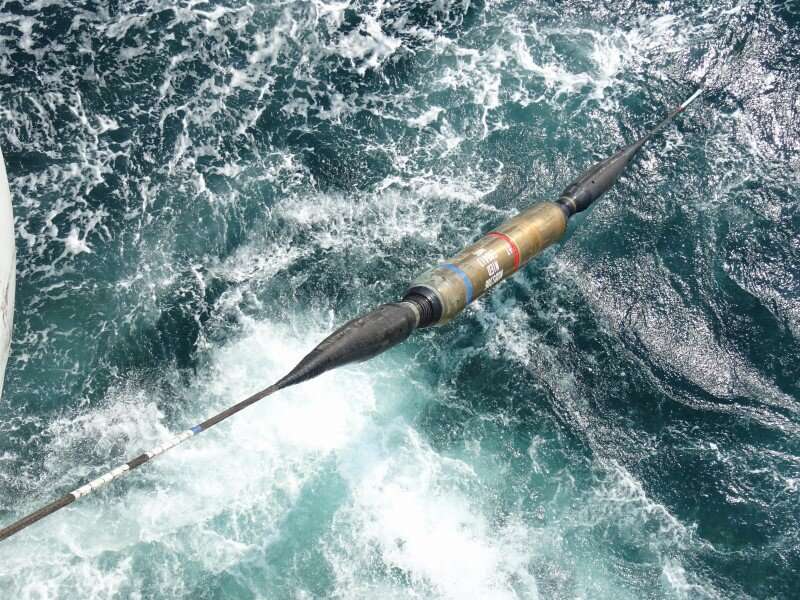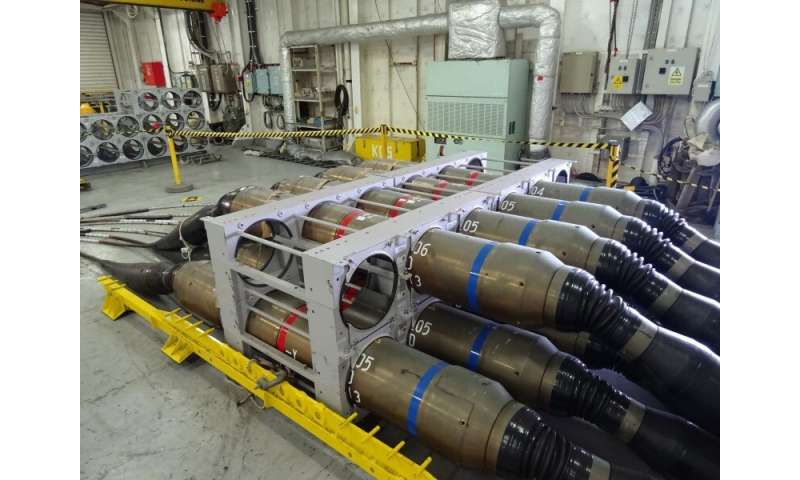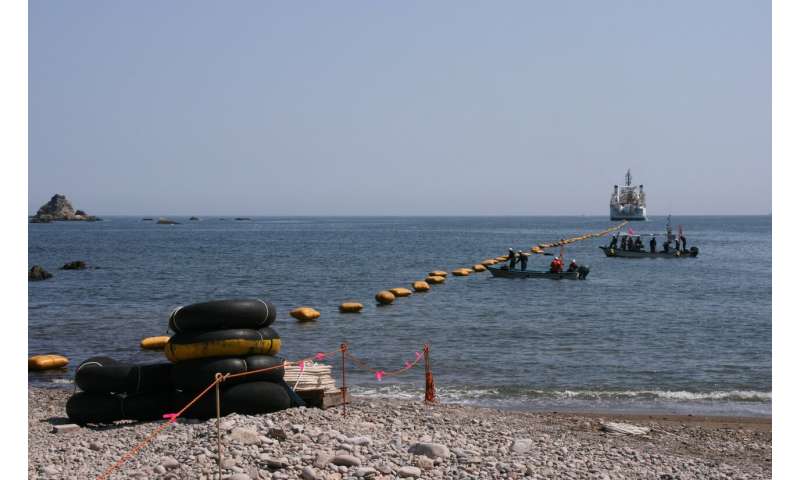August 23, 2019 report
Evidence found of low slip earthquakes impeding progression of large destructive quakes

A team of researchers affiliated with several institutions in Japan has found evidence of slow slip earthquakes impeding the progression of large destructive quakes. In their paper published in the journal Science, the group describes their study of both types of earthquakes and the events surrounding the large Tohoku-Oki quake in 2011, and what they found. Heidi Houston, with the University of Southern California, has published a Perspective piece on the work done by the team in the same journal issue. She also outlines the two large earthquake tracking systems that have been installed in Japan and on the bottom of the ocean along the Japan Trench.
The Japan Trench is a seafloor depression off the coast of Japan—it was created by tectonic forces as the Pacific plate was pushed beneath the continental Okhotsk Plate, a process that continues today. It is also the site of many undersea earthquakes, which can lead to tsunamis, at least in its midsection, according to evidence found by the researchers with this new effort.
As part of their study of slip (slow) earthquakes, the researchers were studying data recorded by the Hi-net seismograph array, which covers Japan with about approximately 800 seismometers, and GEONET, which is an array of sensors on the seabed in the Japan Trench. Slip earthquakes are much slower-moving earthquakes, so they do not shake the ground or cause damage. But they are also harder to detect. To detect them, new technology has been developed that looks for tremors, very-low-frequency earthquakes, and slow slip events (those that migrate enough to show up on sensors).
-

S-net observation equipment before installation. Credit: National Research Institute for Earth Science and Disaster Resilience -

A ship installing the S-net observation equipment. Credit: National Research Institute for Earth Science and Disaster Resilience
The researchers report that they found a lot of slip earthquakes happening in the northern and southern parts of the Japan Trench, but very few of them in the center section. Conversely, they found evidence of large earthquakes happening in the center section, but not in the northern or southern sections. And they also found that during the large Tohoku-Oki quake, the shaking occurred mostly in the center section—seismic waves stopped when they reached the boundaries of the northern and southern sections. Houston suggests this finding will need to be confirmed in other places, but for now, it appears that it might help with large quake forecasting efforts in the years ahead.
More information: T. Nishikawa el al., "The slow earthquake spectrum in the Japan Trench illuminated by the S-net seafloor observatories," Science (2019). science.sciencemag.org/cgi/doi … 1126/science.aax5618
Journal information: Science
© 2019 Science X Network


















